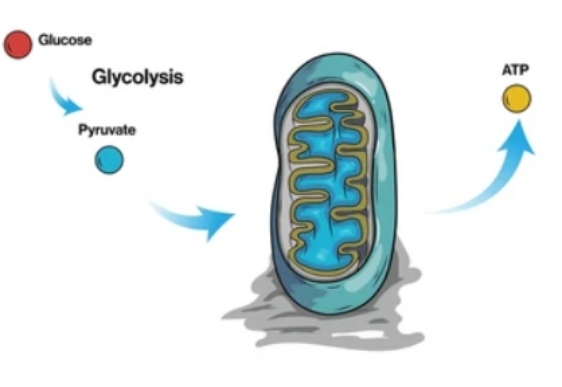Metabolic flux analysis (MFA) based on 13C or 15N labeling can systematically quantify the flux distribution of metabolic networks of specific metabolic pathways in cells or tissues and the relative contribution of each metabolic pathway. MFA can provide the mass isotope information of intracellular metabolites. This technology can not only indicate the overall direction of metabolic fluxes in many cases, but also reveal the activity of each intracellular metabolic reaction accurately and quantitatively through calculation. MFA provides an in-depth understanding of various complex intracellular metabolic processes such as parallel reactions and reversible reactions, and visually reveals the main active pathways in the cell, the relative contribution of each pathway, and its distribution change characteristics.
Glycolytic pathway metabolic flux analysis at Creative Proteomics

As a leading service provider in the field of MFA, Creative Proteomics is capable of providing a wide range of metabolic pathway metabolic flux analysis service, including glycolytic pathway (EMP). EMP is the stage in which glycogen or glucose molecules are broken down to produce pyruvate, and is the most important pathway of sugar metabolism in the body. This pathway is prevalent in plants and animals and in many microorganisms. In aerobic organisms, the glycolytic pathway is the preparatory stage for the oxidation of glucose to carbon dioxide and water. Pyruvate produced by glycolysis can enter the mitochondria and be completely oxidized to carbon dioxide and water via the tricarboxylic acid cycle (TCA) and the electron transport chain, and produce adenine nucleoside triphosphate.
We can track changes in the following intermediate metabolites of the glycolytic pathway, but are not limited to:
- 3-phosphoglyceric acid
- D-glyceraldehyde-3-phosphate
- Sodium pyruvate
Sample requirements
Cells, tissues, and microbial organisms
Cell number: 1×107 cells/sample
Biological replicates: 6-10 biological replicates
Detection platform
- GC-MS, LC-MS and NMR highly complementary detection platforms
- 13C-labeled Glucose carbon flux analysis
- 13C-labeled Glutamine carbon flux analysis
- 15N-labeled Glutamine nitrogen metabolic flux analysis
General project cycle
- Experimental testing: 50 natural days
- Data analysis: 7 natural days
Application of glycolytic pathway metabolic flux analysis
Cancer cells reprogram their metabolism to drive high proliferation rates and ensure their survival under conditions of fluctuating nutrient availability. Increased glycolytic flux has been demonstrated to maintain a high rate of ATP production. The enhanced flux through these two major metabolic pathways (the other being the oxidative metabolic pathway) not only maintains cellular energy homeostasis, which is essential for maximal activity of the growth signaling pathway, but also provides metabolite intermediates for nucleotide and lipid synthesis and balances the cellular redox state.
Why choose us?
- 13C and 15N multi-marker tracers covering 100+ species of multi-pathway labeled metabolites
- Practical ultra-complete adherent cell and suspension cell metabolic flow collection scheme
- Packaged/customized metabolic flux assay and result interpretation integration service
- Experienced in large scale projects
If you have any questions or concerns, please feel free to contact us. Our goal is to exceed your expectations and provide you with the best service possible.
Reference
- Martin, Sheree D., and Sean L. McGee. "A systematic flux analysis approach to identify metabolic vulnerabilities in human breast cancer cell lines." Cancer & metabolism 7.1 (2019): 1-14.